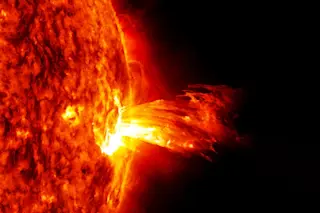When most people gaze up on a clear, dark night, they are struck by how many stars there are. Astronomers have an opposite reaction: They marvel at the stars’ amazing scarcity. Considering the total amount of raw material available in our galaxy for star formation, there should be up to 10 times the current count. Why, then, does the night sky not blaze with starlight?
It is not a bad thing that there are so few stars; quite the opposite. Stars burn gas, mostly hydrogen. All of the hydrogen gas in the universe was formed during the Big Bang, some 13.8 billion years ago. Each galaxy possesses a finite portion of this primordial fuel, and there is no way to make any more of it. If there were more stars, galaxies would burn through their fuel reserves more quickly and would shine more briefly before lapsing into eternal darkness.
Understanding ...














